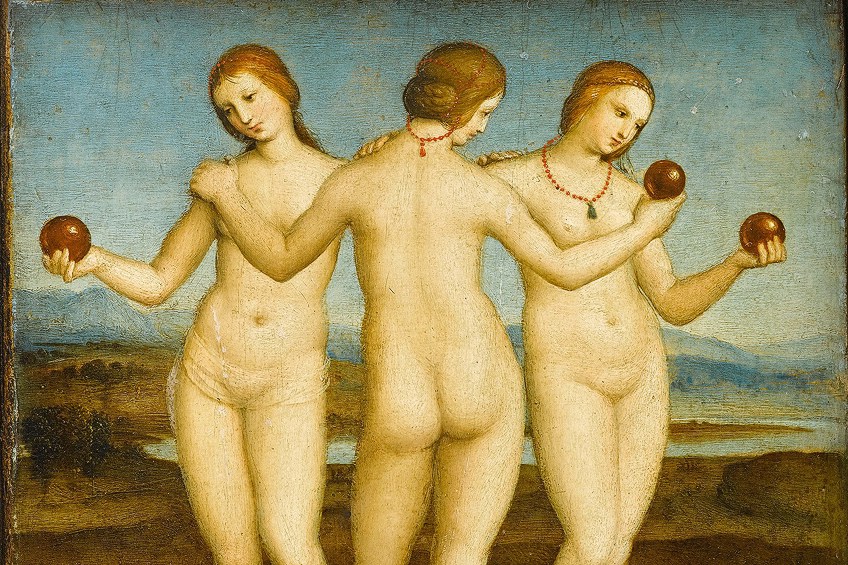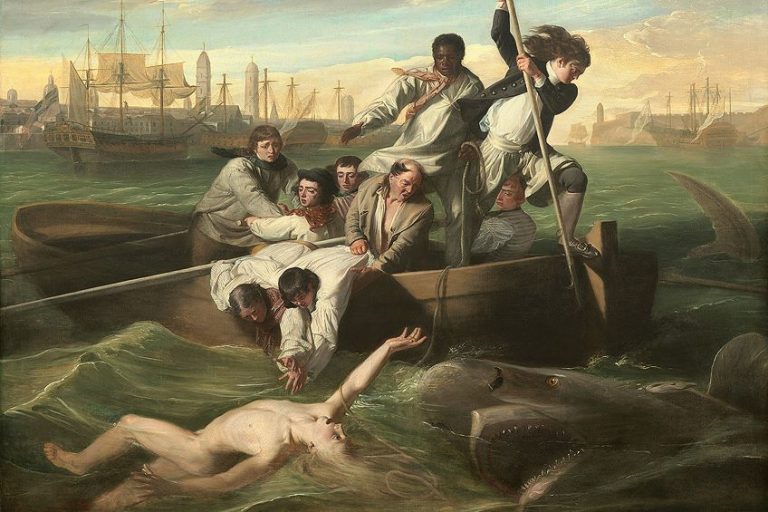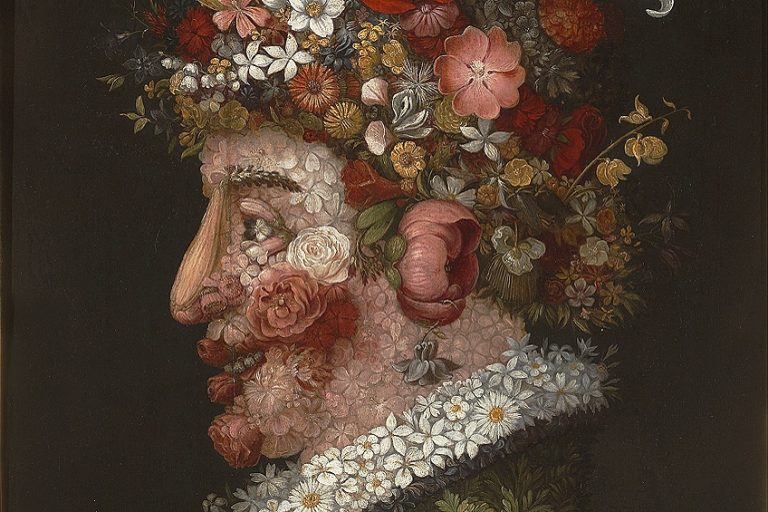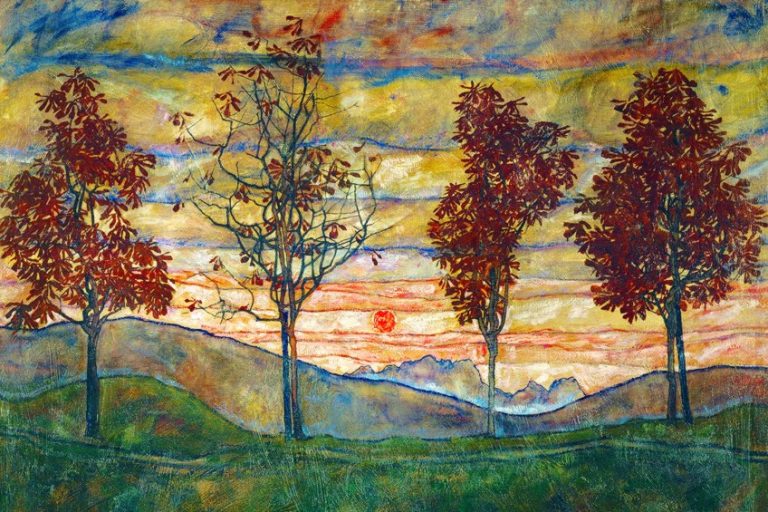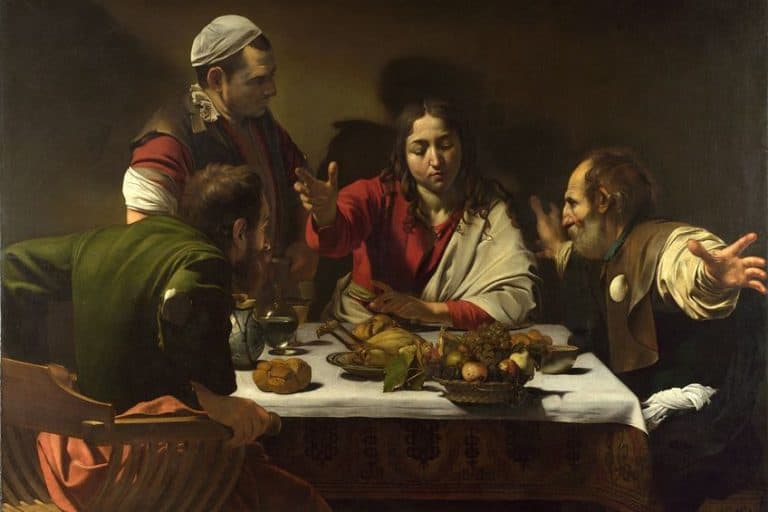Raphael Paintings – A Look at Raphael’s Most Famous Paintings
Born Raffaello Sanzio, Raphael blasted a comet’s path of art across the Italian High Renaissance for the 37 years that he was alive. Raphael’s artworks are the medium through which his real love of life manifested. His expertise in conveying the Renaissance Humanist era’s ideas of aesthetics was regarded as startlingly fresh. Raphael’s paintings are regarded in the same prestigious category of masterful works as those created by Michelangelo and Da Vinci.
An Introduction to Raphael’s Artwork and Life
Raphael’s great talent as a painter, given his comparatively brief lifespan, was the product of instruction that started when he was a boy. From his youth spent in his artist father’s studio to his adult years heading one of the greatest studios of its sort, he established himself as one of the more prolific painters of his generation. Raphael’s paintings were recognized as some of the greatest examples of the age’s humanist impulse, which aimed to examine man’s value in the world via artworks that highlighted absolute elegance.
Raphael did not only master High Renaissance painting skills such as viewpoint, exact anatomical accuracy, and true emotional expression and articulation, but he also included a unique particular manner recognized for its purity, vivid palette, easy arrangement, and splendor.
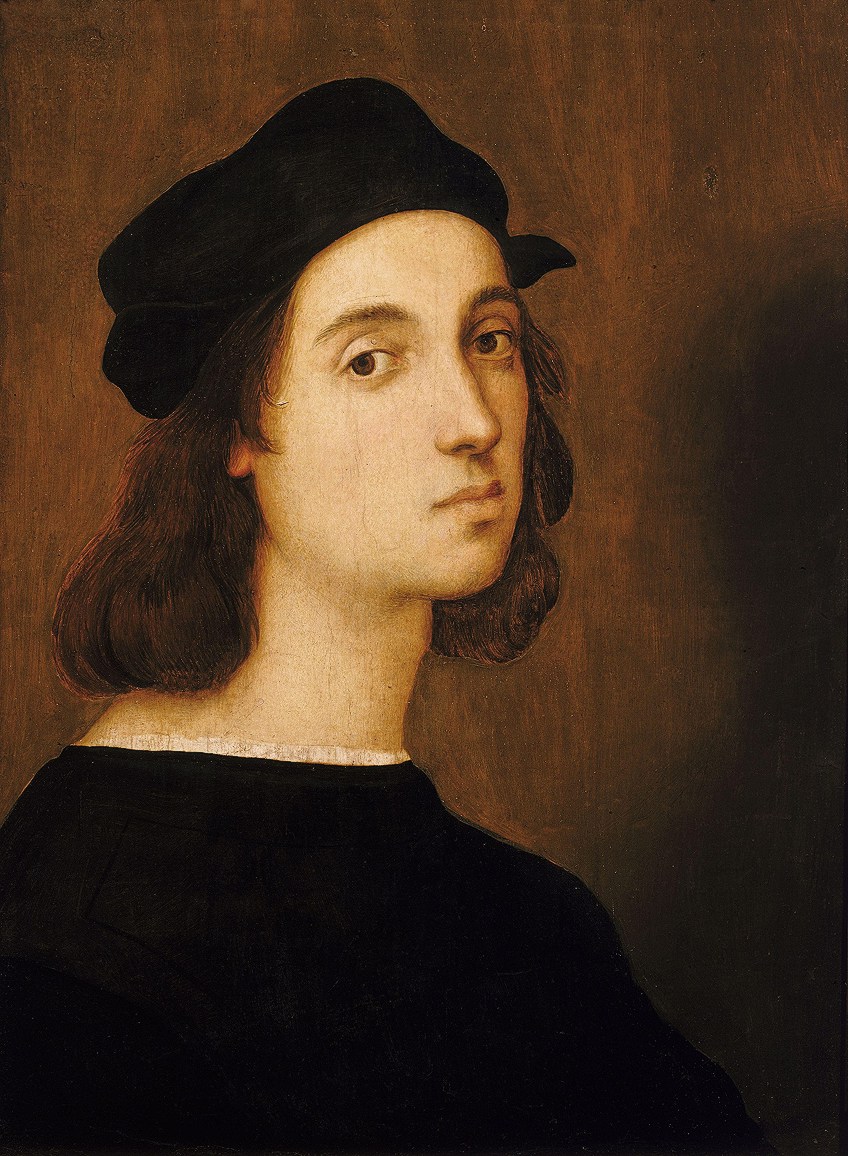
Although it is Raphel’s paintings that brought him fame, several of which can currently be viewed at the Vatican Palace, in which the Raphael Rooms frescoes were his most ambitious project, he was also an engineer, printer, and brilliant draughtsman. To put it another way, he was a real man of the Renaissance. In comparison to one of his main competitors, Michelangelo, the painter was renowned as a man of cordiality, widespread popularity, amicable nature, as well as a great admirer of women.
His social aptitude and pleasant nature gave him an edge over his contemporaries at the time in terms of acceptability and professional prospects.
Raphael’s Most Famous Paintings
What did Raphael paint that made him such a renowned artistic figure? Artworks such as Raphael’s School of Athens, as well as Raphael’s Madonna, are regarded as important, but there are so many of Raphael’s paintings that deserve attention. Let us take a dive into some of Raphael’s most famous paintings and discover more about this artistic Renaissance master.
The Marriage of the Virgin (1504)
| Date Completed | 1504 |
| Medium | Oil on Panel |
| Dimensions | 174 cm 121 cm |
| Current Location | Pinacoteca di Brera, Milan |
The marriage of Joseph and Mary is shown in this picture. One of the two dissatisfied rival admirers is pictured smashing his rod as Joseph sets the band on Mary’s hand. Nevertheless, Joseph’s rod is blooming, indicating the notion that while all hopefuls carried timber staffs, only the selected groom’s could blossom. In the backdrop, a shrine built in the manner of architect Bramante may be seen.
The combination of brilliant hues and the emotive emotions of the characters provide the picture with a beautiful attitude, conveying a feeling of the scene’s supernatural favor rather than a pleasant transitory festivity.
A panel produced by Raphael’s early tutor Perugino influenced the artwork.
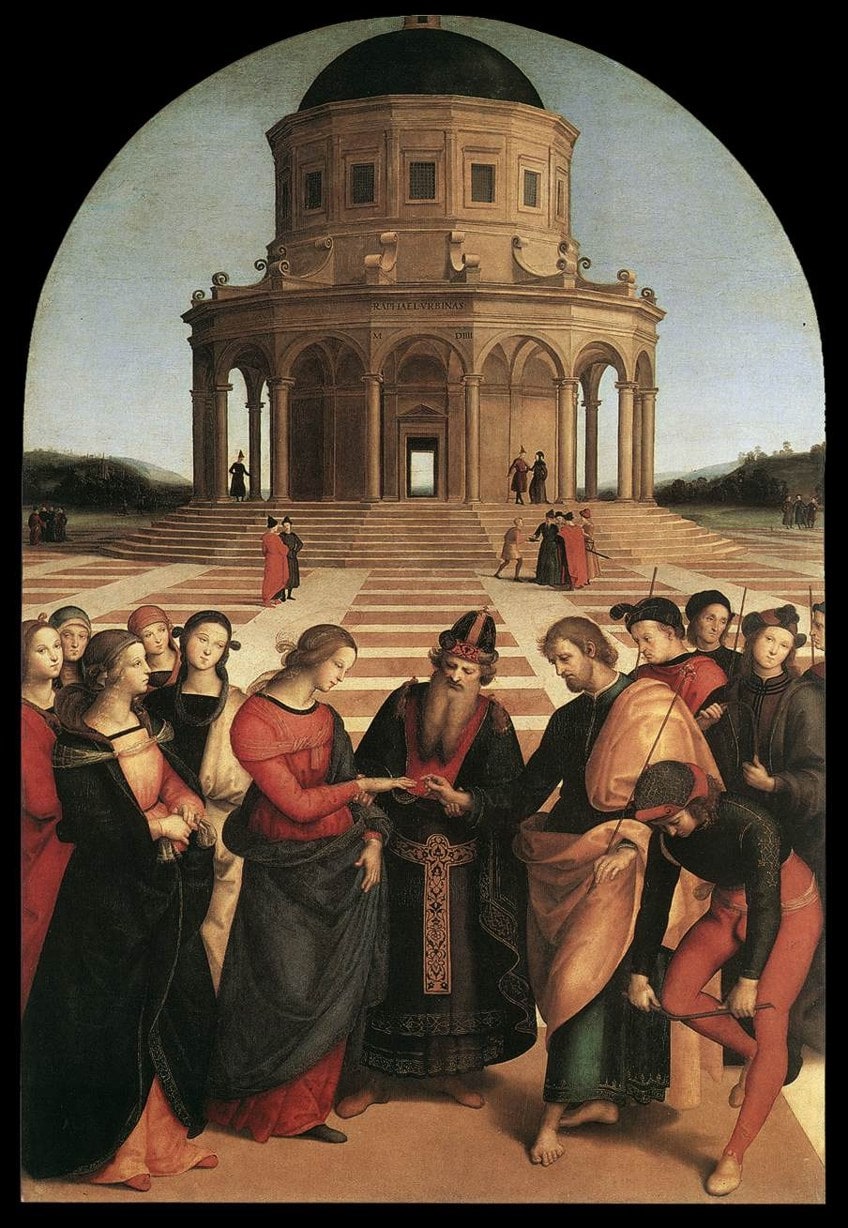
This work marks a watershed moment in Raphael’s growth as an artist, uniting his mentor Perugino’s aesthetic approach with his own increasing authority. We can see him beginning to incorporate his own approach via arrangement, perspectives, and the bold use of strong tonal hues, all of which would distinguish his later paintings.
This artwork demonstrates Raphael’s boldness in announcing himself as an artist, as it is one of his early marked pieces.
It also demonstrates his grasp of methods established during the Renaissance, including the three-point aspect, as we see the people’s proportions shrink as they withdraw into the picture, as well as the sidewalk, which brings us to the sanctuary.
Vision of a Knight (1504)
| Date Completed | 1504 |
| Medium | Tempera |
| Dimensions | 17 cm x 17 cm |
| Current Location | The National Gallery |
Raphael’s Vision of a Knight depicts a youthful knight in armor sleeping beneath a tree, accompanied by a couple of women. One carries a textbook and a weapon, while the other a wildflower. This little artwork is a metaphorical work.
The most probable origin is a metaphor on options based on a section in the Punica, an iconic poem by the Latin author Silius Italicus chronicling the Second Punic War.
Scipio, a youthful warrior, is relaxing in the shadow of a bay tree when he receives a vision of two females he must choose between, being Venus (passion) and Minerva (morals). Minerva was the deity of learning and patroness of crafts, commerce, and security. Behind her is a clean road that represents diligent labor and leads to a palace. Venus, dressed in loosened garments, is the deity of love, and behind her is a higher, rough route that goes to faraway places or the ocean where Venus was birthed, via the river.
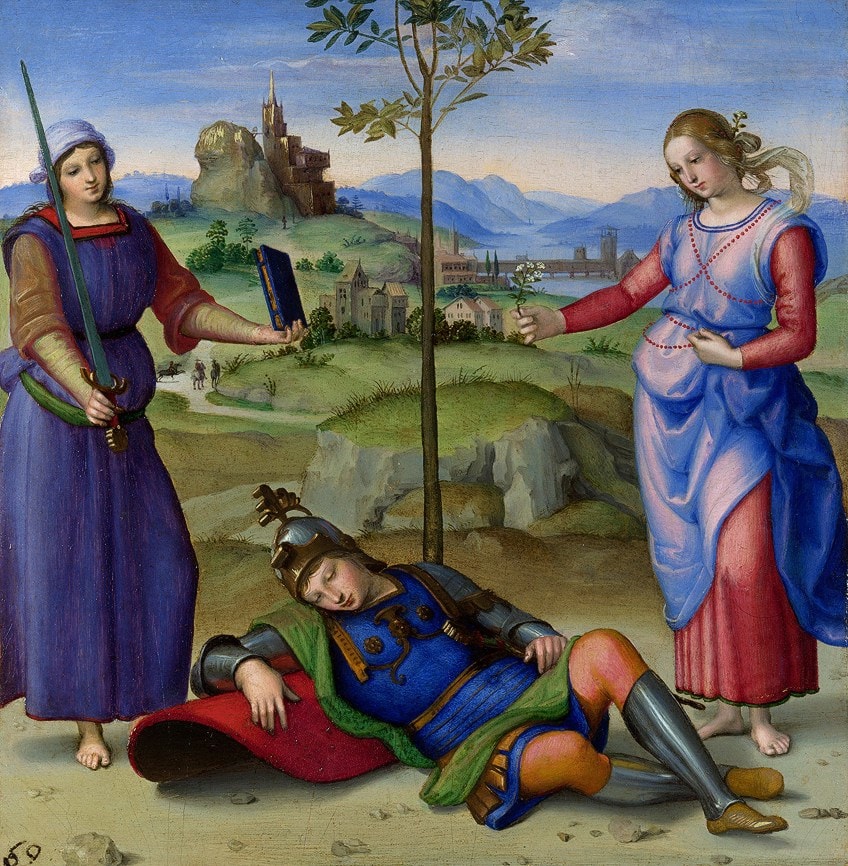
The materials that the two are holding reflect their principles: the books and weapons symbolize the ideas of knowledge, justice, and protection, respectively. The blossom represents the aspirations of a sweetheart, both of which a knight would consider while fantasizing.
The laurel plant was used to make the laurel garland, a sign of great rank in classical Antiquity.
The reward in the Pythian Sports was a garland of bay leaves because the events were in celebration of Apollo, and the wreath was one of his emblems. A Laurel’s wreath or the Laurel on the helmets would be a mark of distinction.
Saint George with the Dragon (1505)
| Date Completed | 1505 |
| Medium | Oil Painting |
| Dimensions | 28 cm x 21 cm |
| Current Location | Louver Museum |
Saint George with the Dragon, one of the artist’s two interpretations of the topic, was part of a collection of small panels produced in Florence for the famed court of Urbino. Saint George, a Catholic Roman knight, saved the heathen king’s princess by conquering a dragon with his spear; the princess then escorted the monster to the town, where the hero slays it with his blade, inspiring the monarch and his followers to embrace Christianity. The battle has shattered Saint George’s weapon, but the gallant knight is going to slay the dragon with the blade and therefore liberate the girl, who is escaping to the right. This panel was paired with Raphael’s St. Michael by the mid-16th century.
Although the other was produced a little earlier, the fact that they are the same height and have similar iconography suggests that Raphael wanted the saints to appear alongside each other.

The primary visual reference for the battling horseman is Da Vinci, whose focus in such a rearing equestrian collective dates back to his Milanese years and perhaps prior to that, and attained a climax in Florence during exactly the moment Raphael was there: Da Vinci was then working on the Battle of Anghiari. Raphael was captivated by this piece, and he might have seen some of the many sketches Da Vinci had produced for it, according to documentation in the shape of a sketch.
However, the ultimate outcome in this small painting is all Raphael’s original, based on a balanced perspective, motion, energy, and the integrity of an accurate composition.
Three Graces (1505)
| Date Completed | 1505 |
| Medium | Oil on Panel |
| Dimensions | 17 cm x 17 cm |
| Current Location | Musée Condé, Chantilly |
The picture depicts the three Graces, Greek mythological goddesses who are supposed to embody elegance, inventiveness, and prosperity. Raphael depicts three ladies in the nude (suspected to be the artist’s earliest representation of the naked feminine figure in both front and back perspectives, delicately caressing each other).
The three ladies are carrying spherical items, two of them are wearing jewelry. While some think they’re a fruit, a closer look reveals that the perfect spheres are more likely to be gilded orbs. It has been believed that Raphael is associating the Graces with the moonlight, the goddess Venus, to emphasize the implications of grace, womanhood, and childbearing qualities.
As one of the painter’s earliest efforts, it’s unsurprising that the picture misses some of the beautiful detail found in his later works.
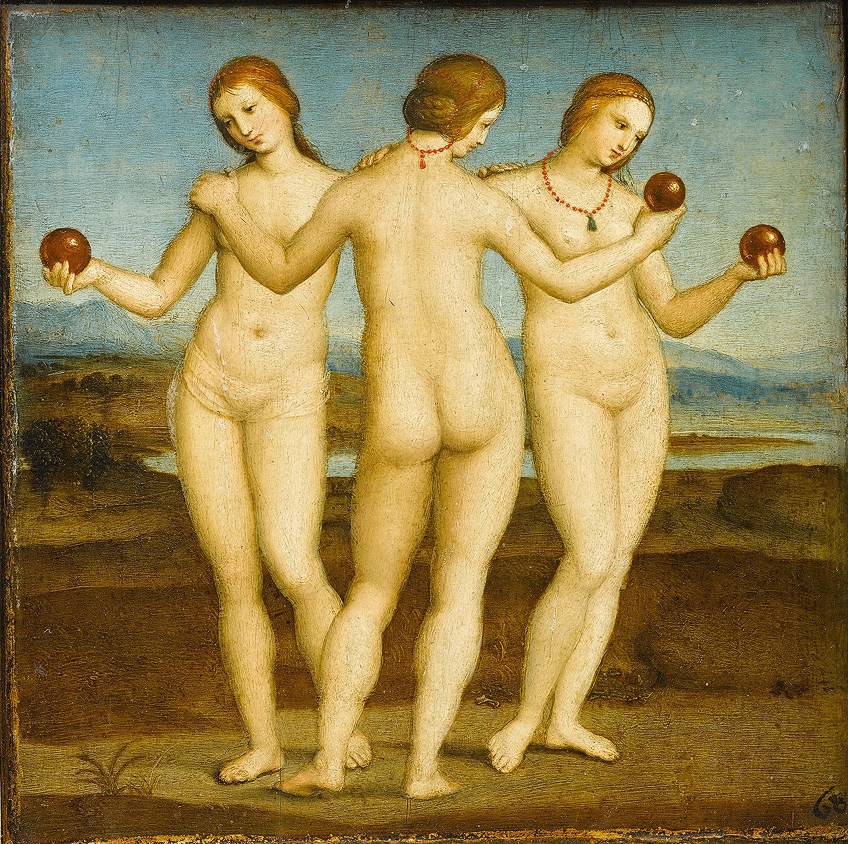
Indeed, contemporary art experts have indicated that the piece misses some of the artist’s subsequent creations, noting that Three Graces suffered from certain rudimentary brushwork, most notably in the comparably defective characteristics of the Grace standing in the center of the picture. Nonetheless, this is a pivotal piece in his early career. The artwork is sometimes attributed to a damaged marble figure on exhibit at Siena Cathedral, however, this is debatable.
It has been said that the picture was influenced by the Ferrara School, a collection of painters whose works are noted for a combination of inspirations from locations such as Florence and Venice and bear no resemblance to any known sculpture.
The Entombment (The Deposition of Christ) (1507)
| Date Completed | 1507 |
| Medium | Oil on Wood |
| Dimensions | 184 cm x 176 cm |
| Current Location | Galleria Borghese, Rome |
More than 15 sketches for this painting have remained, making it the most thoroughly researched of Raphael’s paintings and allowing some genuine glimpses into the evolution of Raphael’s thinking as he examined a certain topic. It was a notarized effort bound for the Church of S. Francesco al Prato in Perugia and was assigned by Atalanta Baglioni a few years after her child, Grifonetto Baglioni, killed his partnerships in an attempt to acquire the power of the Perugian Government – only to be attacked and killed himself several days afterward, according to the best obtainable proof.
As a result, the artwork both portrays and commemorates the mourning mother’s grief.
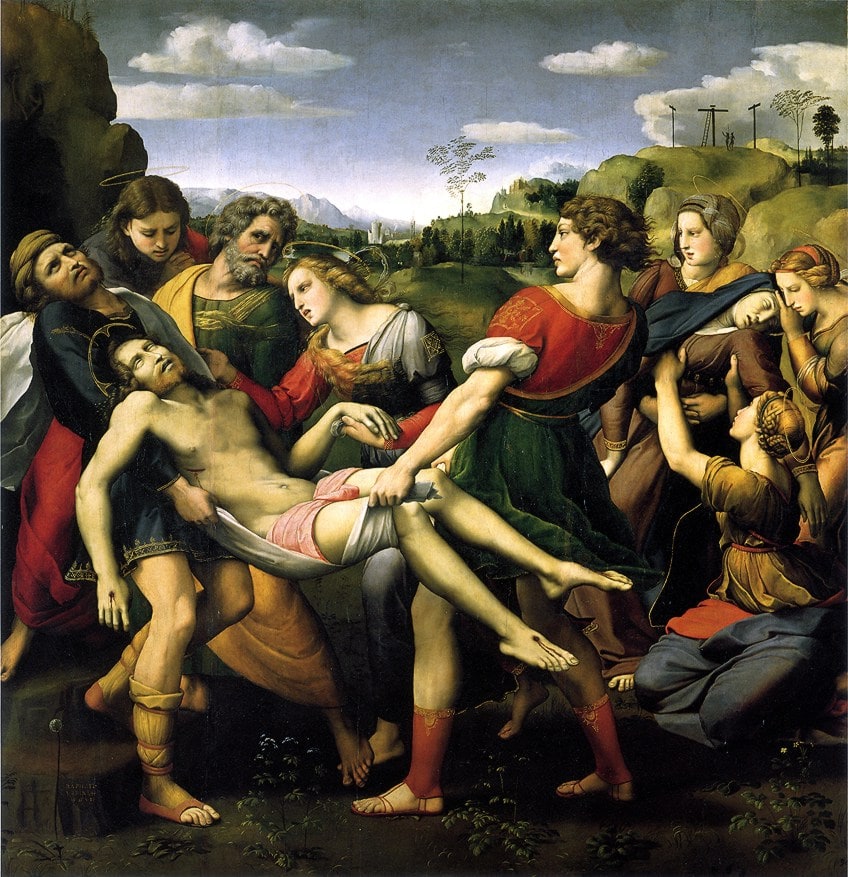
The sorrowful Mary collapsing to the right, an obvious allusion to Atalanta Baglioni, with presumably a corollary allusion to Mary as co-redeemer with Jesus as she repeats his Suffering, is one of the image’s two main and unique reasons. The other motivation, depicted on the far left, depicts the carrying of Christ’s corpse to the burial.
During the Renaissance period, the entombment of Christ was a tremendously popular theme. Aside from Raphael, both Michelangelo and Caravaggio had artworks on the same subject.
Among the metaphorical elements derived from Raphael’s Florentine training, those derived from Michelangelo appear to be the most widespread in his last Florentine works. The Entombment is the piece in which Michelangelo’s value to Raphael is most clear.
Canigiani Holy Family (1508)
| Date Completed | 1508 |
| Medium | Oil Paint |
| Dimensions | 131 cm x 107 cm |
| Current Location | Alte Pinakothek |
During the initial years of the 16th century, Raphael, Michelangelo, and Da Vinci were preoccupied with the task of incorporating the Madonna and Child theme into innovative creative groupings. Soon after, the issue was broadened to also include not only the young John the Baptist but also Saint Joseph. Raphael has leaned significantly on the precedent of the two elder Florentine artists, as he did in numerous pieces from this era, but the end product is highly distinctive and distinctively Raphaelesque.
Raphael combines motifs from Leonardo and Michelangelo with a decidedly Northern scene and exquisite colorist periods characterized by shimmering colors in this painting.

The pyramid in which the characters are properly encased is still based on Da Vinci’s designs, but the interactions between the individuals, formed by the looks they share and the placid sentiments they express, elevate the arrangement to a gently descriptive level. The artwork’s mood is so much dissimilar to Da Vinci’s tight and frenetic style.
Raphael’s unrivaled expressive ability allows him to generate an image that is rich in human interaction and clear tranquillity.
Disputation of the Holy Sacrament (1510)
| Date Completed | 1510 |
| Medium | Fresco |
| Dimensions | 500 cm x 770 cm |
| Current Location | Apostolic Palace, Vatican City, Rome |
This fresco is one of four murals in the Vatican Palace’s Raphael Room that portray logic, literature, religion, and legislation individually. The members of a Catholic Religion are shown beneath the expanse of the heavens above their hallowed altar in this famous Raphael artwork.
The painting depicts Christianity’s triumph over Logic, which is shown on the other wall in Raphael’s “The School of Athens” (1511).
Jesus is in the midst of the heavens, with the Virgin Mary on his side and John the Baptist on his other side. Above Christ, God is pictured presiding over the heavens, flanked by Jacob and Adam. Moses is portrayed carrying the stones containing the ten commandments, while the Holy Spirit is depicted at Jesus’ feet. Angels hold the four scriptures along either side of the Holy Spirit.

Raphael’s first big contract, to renovate Pope Julius II’s private rooms, was while he was just 27 years old, and he created this painting during that contract. Regrettably, it necessitated painting over frescoes by other great Renaissance artists such as Perugino and Piero Della Francesca.
Raphael obtained the contract to fresco the four rooms opposite Michelangelo, who was painting on the Sistine Chapel at that moment, as well as Leonardo da Vinci.
This is claimed to have enraged Michelangelo, who later accused Raphael of copying, circulating reports that Raphael had slipped into the Sistine Chapel to see Michelangelo’s handiwork firsthand. The genesis of the antagonism, meanwhile, was most likely nothing more than the rivalry between two exceptionally capable experts fighting for the approval of the same customer.
The School of Athens (1511)
| Date Completed | 1511 |
| Medium | Fresco |
| Dimensions | 500 cm x 770 cm |
| Current Location | Apostolic Palace, Vatican City |
Despite the name, The School of Athens refers to intellectuals from the classical era rather than a specific school of thought. The movements of the philosophers shown in the painting have been the topic of much scholarly analysis and discussion, although it is unclear how much of their ideas Raphael would have been acquainted with.
What is significant is how Raphael has collected all of the most prominent ancient thinkers within a magnificent Renaissance structure, which alludes to Bramante’s ideas for the future St. Peter’s Basilica.
Many of the intellectuals may be identified by their imagery, which would have been well recognized at the time and is based on busts unearthed from archaeological digs. Aristotle and Plato are seen in the middle, holding their well-known books Ethics and Timeus, accordingly.

Pythagoras is in the forefront, Euclid is to the side, Zoroaster is carrying the celestial sphere, Ptolemy is carrying the terrestrial sphere, and Diogenes is on the steps carrying a dish. The academic stooping over Pythagoras is claimed to be that of the Arab thinker Averroes, who is attributed with introducing Plato and Aristotle’s teachings to the Westerners.
According to history, Raphael mocked his greatest adversary Michelangelo by portraying his image as the visage of the Scholar Heraclitus resting on a block of stone.
Because of the melancholy tone of his intellectual philosophy, Heraclitus is sometimes referred to as the crying philosopher, which corresponds to Michelangelo’s status as a giant baby. A self-portrait of Raphael sporting a dark beret is also depicted in the artwork, posing next to Il Sodoma, who was among the painters whose artwork Raphael was forced to repaint.
Sistine Madonna (1512)
| Date Completed | 1512 |
| Medium | Oil on Canvas |
| Dimensions | 265 cm x 196 cm |
| Current Location | Gemäldegalerie Alte Meister, Dresden |
The infant and Madonna are in the center of Raphael’s Sistine Madonna, with Saint Barbara and Saint Sixtus seated on either side of them. Because her remains were honored in the church, Saint Barbara was incorporated into the artwork. Saint Sixtus enters on the audience’s behalf, as seen by his right hand gesturing down to us while gazing up at the Madonna. The two angels at the bottom of the image gaze up at them, lacking the veneration of the saints, the seriousness of the Virgin, and the purity of the infant Jesus. Pope Sixtus’ papal crown is seen in the artwork’s lower-left corner.
Raphael’s blending of Renaissance themes with his personal technique is resumed in this religious piece.

Raphael employed a pyramidal structural form, which was popular at the time. The drapes, which seem to be pulled back to expose the celestial view, contribute to the artwork’s unity with the altar for which it was produced. The illusory area in which the celestial forms are positioned heightens the celestial meaning of the blessings’ prayer, which is designed to evoke awe in the crowd below. The addition of the Pope’s cap and the terrace on which the angels are reclining is the sole earthly touch hinted at in the image.
The work is significant for a variety of factors; it was the last of Raphael’s “Madonnas” to be created, and it also has an intriguing pedigree and effect in Germany.
Triumph of Galatea (c. 1512)
| Date Completed | c. 1512 |
| Medium | Fresco |
| Dimensions | 300 cm x 220 cm |
| Current Location | Villa Farnesina, Rome |
This painting recounts the tale of Galatea, the child of the sea deity Nereus, who fell madly in love with a peasant named Acis. Polyphemus, the Cyclops and child of Poseidon, is said to have adored Galatea, and then when he discovered her and her lover Acis embracing, he murdered him in a fit of anger. Galatea is sailing the waves on a cockle carriage driven by two dolphins, attempting to leave. In this thrilling getaway, mythical sea animals, and nymphs encircle the protagonist. The Triumph of Galatea was created to adorn Raphael’s financier and colleague Agostino Chigi’s Villa Farnesina, and is the painter’s sole work based on Greek mythology.
This Raphael painting was motivated by Angelo Poliziano’s poem “Stanza per la Giostra.” The poem explains how, notwithstanding Polyphemus’ love song, Galatea rejects him and sails away with her entourage of sea sprites.

Even though neither his lyrical sequence nor the anticipated frescos to adorn the estate were finished, we are fortunate to have a magnificent instance of Raphael’s precise creative talent as well as creative interpretations inside this piece.
Raphael’s capacity to create notions of magnificence so spectacularly is evident in the painting’s raw emotion.
All of the characters in the arrangement connect with one another to produce a unified whole. Each move is greeted with a corresponding motion, directing our attention to the central loveliness of Galatea’s features, which the painter claims originated from his mind rather than a person. Galatea’s flowing gown, the diving dolphins, and the superb physique of the other individuals accomplish a frenetic fluency of motion, demonstrating exquisite manipulations of the figure.
Woman with a Veil (La Donna Velata) (c. 1514)
| Date Completed | c. 1514 |
| Medium | Oil on Canvas |
| Dimensions | 82 cm x 60 cm |
| Current Location | Palatine Gallery, Palazzo Pitti, Florence |
Perhaps no other Raphael artwork exemplifies his enthusiasm for depicting beauty in all its idealistic forms more than Raphael’s portrait of his adored Margherita Luti, originally titled La Donna Velata in Italian. The pearl in her tresses is notable as a nod to her given name, which means “pearl.” The artwork was made out of love for the sitter rather than as a request.
Margherita’s facial characteristics are evocative of the face in several of Raphael’s Madonnas, and she exudes a beauty granted by the masculine vision.
The flawless perfection of her complexion, the seductive almond curve of her eyes, and the finely modeled countenance in an otherwise unreachable exquisite stance make this work a memorable monument to love. Raphael’s mastery of Leonardo da Vinci’s sfumato method of generating a hazy blurred merging of hues is evident in this work.
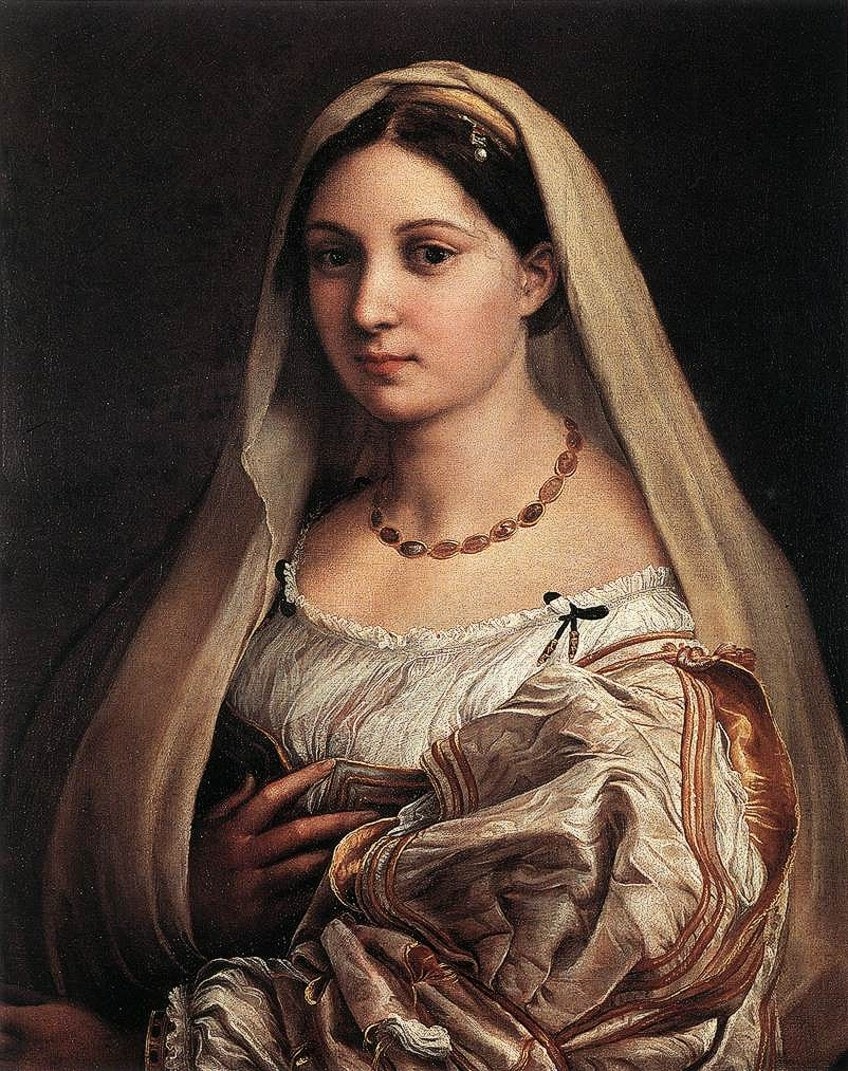
Raphael also borrowed da Vinci’s idea of producing half-length portraiture, which enabled him to concentrate on his expertise at portraying the rich glittering material of his subject’s garment. In the same way that others allude to the sumptuous sensuality of Georgia O’Keeffe’s floral works, art critic Julia Addison noticed an amorphic sensuality in the looseness with which it is presented. The artwork is still significant in Raphael’s total output.
Although being a painting of great elegance, this Raphael artwork is remarkable in that it is of a real woman, not only a portrayed abstraction of elegance.
Raphael provides us not only a flawless devotion to attractiveness and his famed love of females but also a representation of his passion for the subject, which renders him so approachable, by creating a portrait steeped with such intimate history.
Christ Falling on His Way to Calvary (c. 1515)
| Date Completed | c. 1515 |
| Medium | Oil Paint |
| Dimensions | 318 cm x 229 cm |
| Current Location | Museo Nacional del Prado |
It depicts the recurrent theme of Christ bearing the Crucifix to his execution, at the point when he falls and his parents experience an agonizing seizure All of the artwork’s passion is concentrated in the front, while the backdrop is reminiscent of a stage set, with remote clusters of individuals and crucifix. The man in the forefront on the left is an inverted version of a person in Raphael’s artwork The Judgement of Solomon.
The bearing of the Crucifix was frequently consigned to a predella in Italian painting since the creative structure unavoidably had a horizontal direction.
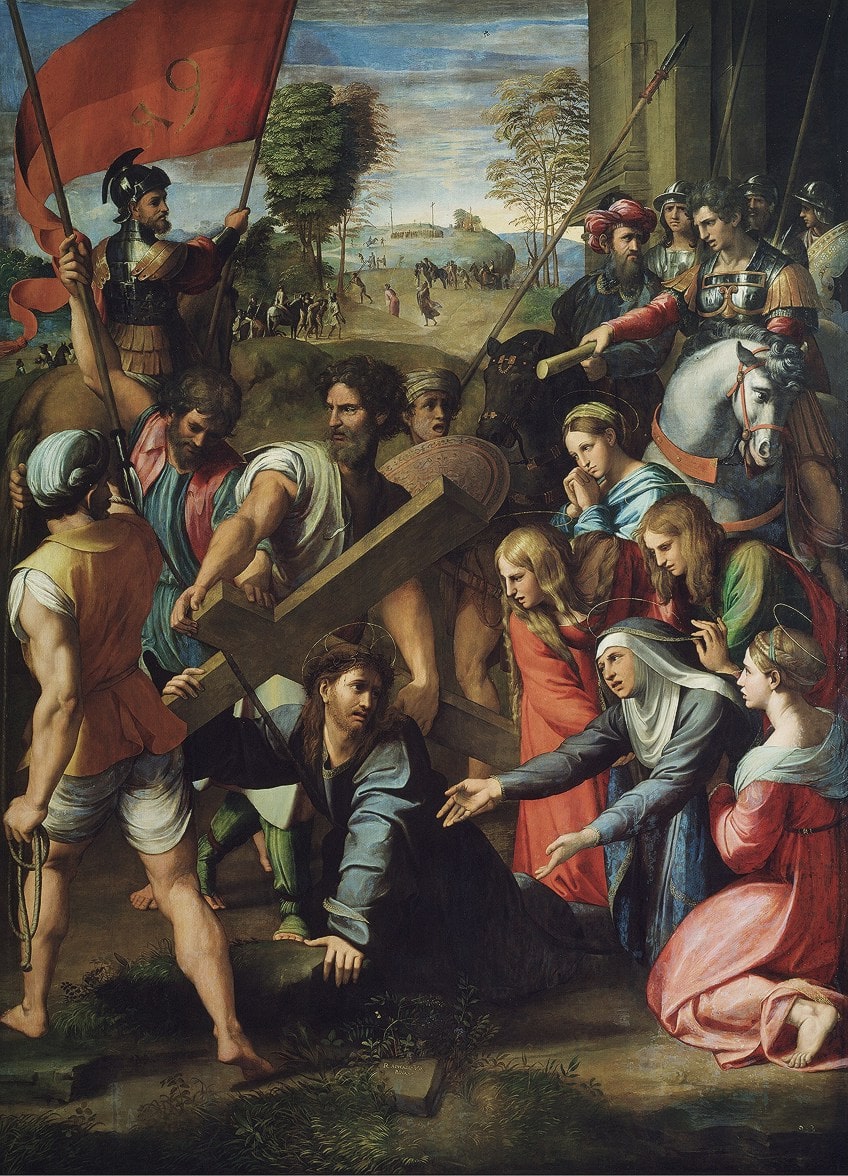
Raphael structured the arrangement vertically, departing from the customary portrayal of the topic, due to the enhanced prominence of the theme and the artwork’s purpose as an altarpiece. Christ is shown halting as he goes out of the frame to the left; the road he would shortly travel can be seen curving back into the frame, eventually heading to the hill where two crosses have already been put up in the center area.
Raphael painted a significant part of the work himself, and it is one of the most daring of his whole career.
Baldassare Castiglione (1515)
| Date Completed | 1515 |
| Medium | Oil on Canvas |
| Dimensions | 82 cm x 67 cm |
| Current Location | Louvre, Paris |
Raphael’s portrait of his good acquaintance Baldassare Castiglione is filled with warmth and passion in its portrayal of a cultivated man. His look is forceful yet modest, paying reverence to the type of strength achieved without conceit or ostentation. He looks to be a man who is secure in his intelligence and thus dedicated to the greatest goals of humanism, which was the most prominent ideology at the time. The brown backdrop contributes to the artwork’s seriousness by softening the hues of the doublet edged with fur and dark ribbons. The sitter’s emotional fragility hides in the silent space of his presence.
Castiglione was a politician and the author of a work on royal etiquette and graces that became a significant cultural influencer in the 16th century.

Raphael’s painting, with its exquisite sensitivity, exemplified the controlled refinement of the courtier, which he advocated as required in his book. Baldassare was so taken with the artwork that he included it in a poem he penned to his wife, praising its remarkable similarity and the human essence it exudes. The painting, which depicted the sitter in a three-quarter profile staring out at the spectator inside a pyramidal pattern popular during the Renaissance, is similar to the Mona Lisa, which Raphael is claimed to have encountered before Leonardo da Vinci departed for France.
This artwork is one of the most well-known portraits of the High Renaissance and has gained widespread acclaim throughout the years.
La Fornarina (1520)
| Date Completed | 1520 |
| Medium | Oil on Wood |
| Dimensions | 85 cm x 60 cm |
| Current Location | Galleria Nazionale d’Arte Antica, Rome |
La Fornarina, one of Raphael’s most well-known uncommissioned works, is a companion piece to La Donna Velata and shows the artist’s strong affection for Margherita Luti. The picture depicts a seated half-length naked woman staring out at the observer in an unfastened garment that hides the bottom half of her figure.
Her right-hand strokes her bosom as her left hand lays on her lap. While a veil is a sign of humility, it does not obscure her lusciously displayed upper body. The dark terrain in the backdrop adds to the artwork’s tonal rendering quality and the beauty of the headdress she sports.
With her perfect complexion and glowing face, she stares directly through us, grinning at somebody on the right, and given her friendship with Raphael, we have no doubt she was staring at him when he portrayed her.

Raphael inscribed this picture on the ring around her wrist, maybe hinting at his ownership of her. According to subsequent restorations, the woman was previously donning a wedding band. Because the wedding band had been painted over, it was assumed that Raphael had discreetly wedded Margherita. However, due to their respective levels and the reality that he was already committed to Maria Bibbiena, the couple had to enjoy their relationship in secrecy.
The use of motion to express meaning in the piece demonstrates Leonardo da Vinci’s impact on Raphael. It also symbolizes the artist’s goal to portray only the greatest concepts of perfection.
The Transfiguration (1520)
| Date Completed | 1520 |
| Medium | Tempera on Wood |
| Dimensions | 410 cm x 279 cm |
| Current Location | Pinacoteca Vaticana, Vatican City, Rome |
This was Raphael’s final painting. The contract reignited the rivalry between the two painters. Raphael’s artwork had not been finalized at the time of his death, despite the fact that the majority of it was done by his own hand. Giulio Romano, his student, and Gianfrancesco Penni, his helper, would later finish it. It represents the pinnacle of Raphael’s creative success in his brief life, and it began to acquire popular and scholarly appreciation after Raphael’s death.
The artwork was displayed in Raphael’s workshop while he lay in state, and it was carried at the front of his burial ceremony, which was accompanied by a vast assembly of mourners.
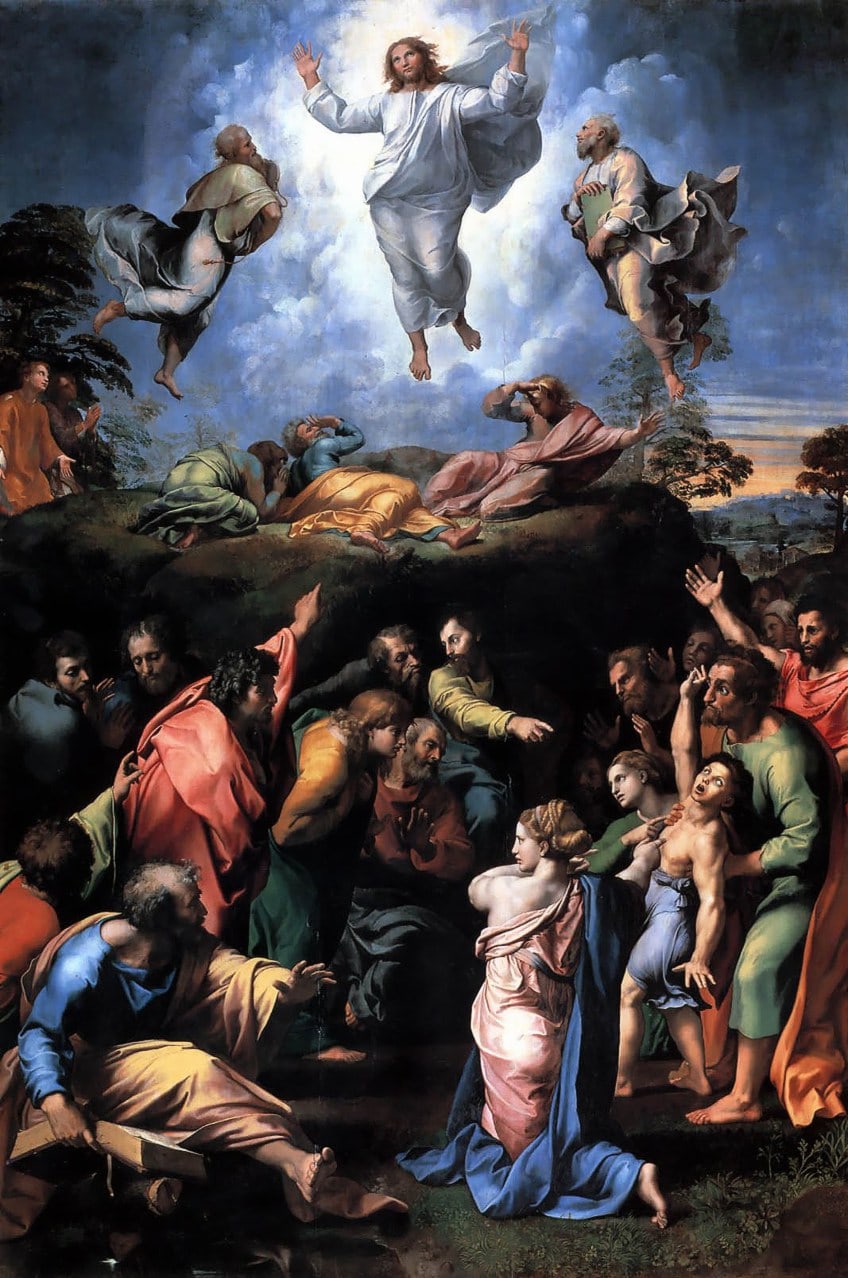
This painting, hailed by Giorgio Vasari as Raphael’s “most exquisite and holy masterpiece,” has served as a continuing source of knowledge and influence to painters. Turner referred to it in a compositional course, and Caravaggio admired it for its use of chiaroscuro (the impression of contrasting shadows and lighting), a method Caravaggio went on to perfect.
The intense aesthetic tensions in the lower half of the picture, often linked to as an excellent indicator of Mannerism, a school of European art that originated around the period of Raphael’s demise and flourished until the end of the 16th century, also evokes the Baroque style that superseded Mannerism.
And with that, we have reached the end of our list of Raphael’s most famous paintings. Raphael’s artworks are regarded to be among the most highly revered paintings in history. Raphael’s paintings were recognized as some of the greatest examples of the age’s humanist impulse, which aimed to examine man’s value in the world via artworks that highlighted absolute elegance.
Frequently Asked Questions
What Did Raphael Paint?
Raphael painted Renaissance-era artwork. Raphael’s School of Athens and Rapahel’s Madonna paintings are some of his most well-known pieces. He was also an engineer, printer, and brilliant draughtsman. To put it another way, he was a real Renaissance figure.
Why Was Raphael Famous?
Why is Raphael so significant? Raphael was a great artist during the Italian Renaissance. His art is appreciated for its purity of design and fluidity of arrangement, as well as for visualizing the Neoplatonic concept of human magnificence. During his career, he was also a well-known architect. His performance as an artist to the papal palace received great praise, and he positioned himself as Rome’s most popular painter. He was hired to depict portraits, religious topics, and the Pope’s personal apartments, as well as create tapestries. Raphael impacted painters until the 1900s, and his works made people think about personalities. Raphael imbued paintings with genuine sentiments, altering people’s perceptions of art.
Isabella studied at the University of Cape Town in South Africa and graduated with a Bachelor of Arts majoring in English Literature & Language and Psychology. Throughout her undergraduate years, she took Art History as an additional subject and absolutely loved it. Building on from her art history knowledge that began in high school, art has always been a particular area of fascination for her. From learning about artworks previously unknown to her, or sharpening her existing understanding of specific works, the ability to continue learning within this interesting sphere excites her greatly.
Her focal points of interest in art history encompass profiling specific artists and art movements, as it is these areas where she is able to really dig deep into the rich narrative of the art world. Additionally, she particularly enjoys exploring the different artistic styles of the 20th century, as well as the important impact that female artists have had on the development of art history.
Learn more about Isabella Meyer and the Art in Context Team.
Cite this Article
Isabella, Meyer, “Raphael Paintings – A Look at Raphael’s Most Famous Paintings.” Art in Context. November 3, 2021. URL: https://artincontext.org/raphael-paintings/
Meyer, I. (2021, 3 November). Raphael Paintings – A Look at Raphael’s Most Famous Paintings. Art in Context. https://artincontext.org/raphael-paintings/
Meyer, Isabella. “Raphael Paintings – A Look at Raphael’s Most Famous Paintings.” Art in Context, November 3, 2021. https://artincontext.org/raphael-paintings/.


